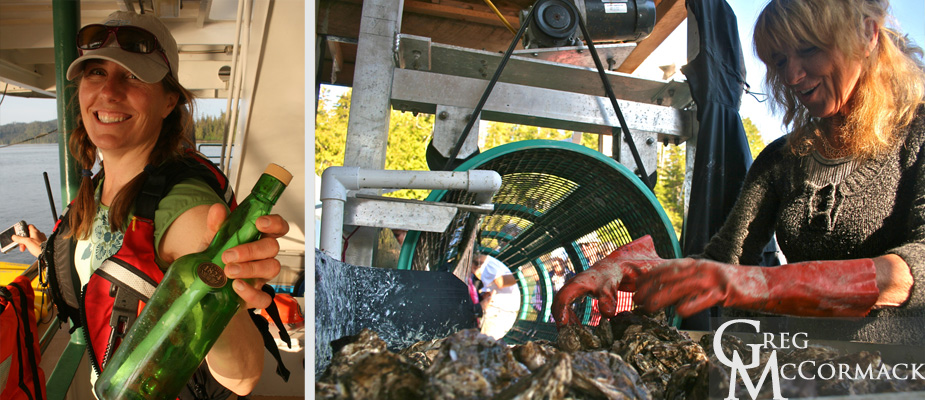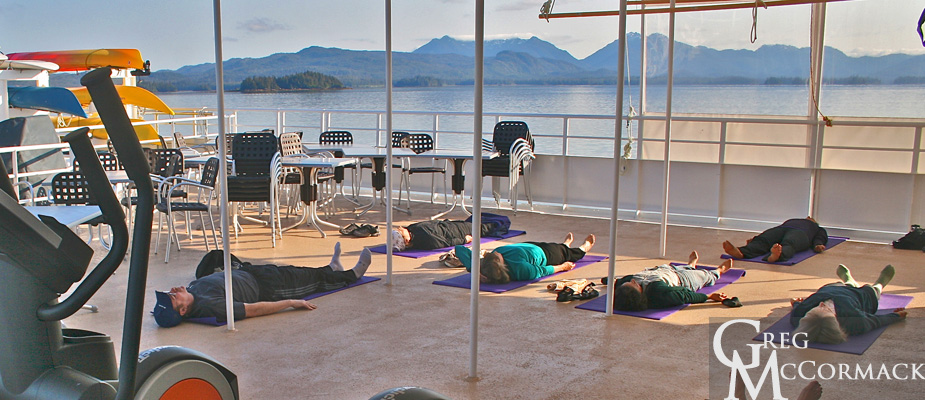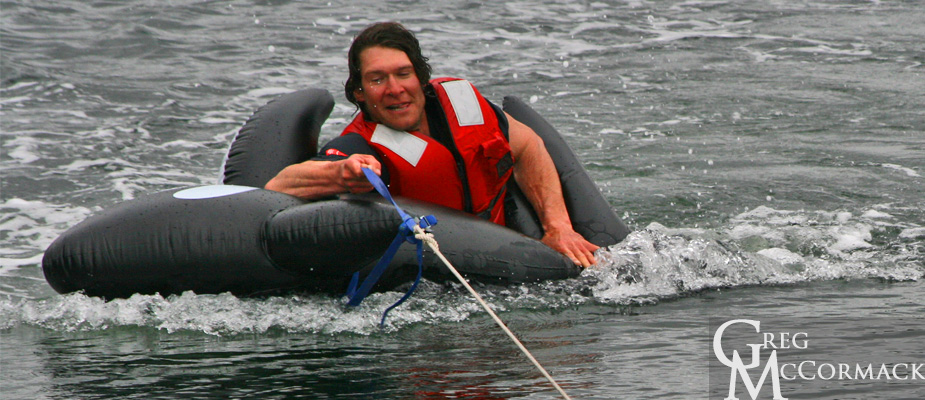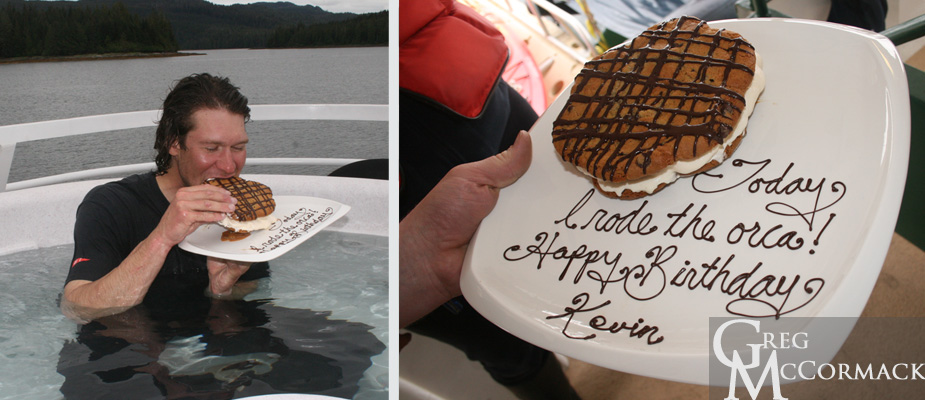Search results
Sunday | May 29th
July 28, 2011 by admin
Filed under InnerSea Discoveries
We motor through the wildlife-rich waters of Sea Otter Sound in the early morning. Our Wellness Instructor Leah offers one of her wonderful yoga sessions on the sunny Sun Deck to the delight of many of our guests.
We make it to El Capitan on Prince of Wales or POW Island in the late morning. Guests are shuttled to shore for one of the few dry landings of the entire summer. From there, a short walk across a logging road (over 2000 miles of logging roads exist on POW) to the U.S. Forest Service kiosk where 2 rangers await us with helmets and flashlights for our cave tour. But first, 367 steps uphill through a second-growth, and later an old-growth forest to the cave entrance.
I tell my group of spelunkers to be very careful in the cave and to watch out for the USD, the “unexpected and sudden deceleration”, i.e. bumping your head in the cave on the low ceiling!
On our way back to the ship, an unusual sight: Captain Marce pulls Chief Mate Kevin Martin around on an inflatable orca for a half-hour in the bay as part of his birthday celebration.
Lee our chef presents Kevin a huge ice-cream sandwich cookie to celebrate while Kevin warms back-up in the hot tub.
We motor south along El Capitan Passage and pay a visit to the floating dock of Michael and Kathy Sheets, of Alaska Gold Oysters, LLC. They give us an informative and delectable tour of their oyster farm. Located on a floating pier in a tucked away island cove on the west side of Prince of Wales Island, the tour is a big success with our guests as we all got to eat plenty of raw and delicious oysters.
They talk about their operations and permit with Alaska Department of Fish and Game. I ask about harmful algal blooms (HAB’s) and how often they occur. Apparently not too often. HAB’s are events where dangerous levels of plankton such as Pseudo-ntizschia release a toxin called domoic acid in the bodies of filter feeding animals such as mussels. The toxin can cause paralytic shellfish poisoning or PSP in people that eat contaminated bivalves.
Private business associations work in partnership with scientists and managers that monitor and study blooms of toxic algae that harm resources. Tests of plankton in waters are sent to labs and results determine when it is safe to harvest and eat shellfish.

Laurie, one of our expedition guides, finds an MIB, or a “message in a bottle” floating in the sea on her afternoon kayak. She is very excited to read the note that offers a free cup of coffee in the town of Craig, just a few miles away from Klawock. We calculated that the bottle had been at sea for two weeks and covered less than 20 miles!




